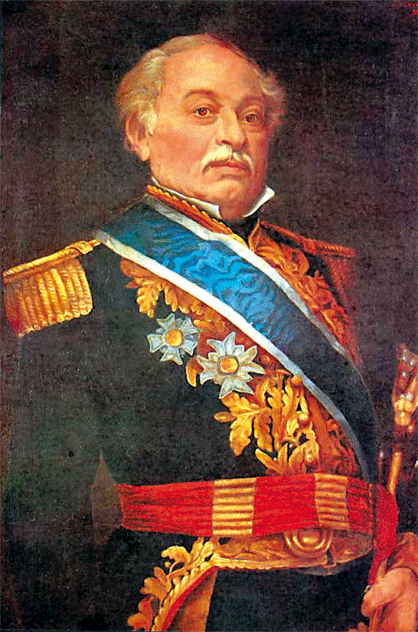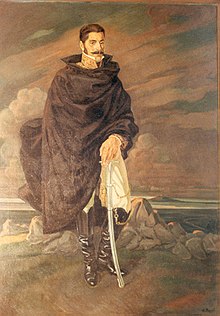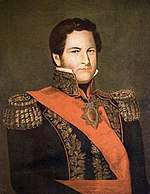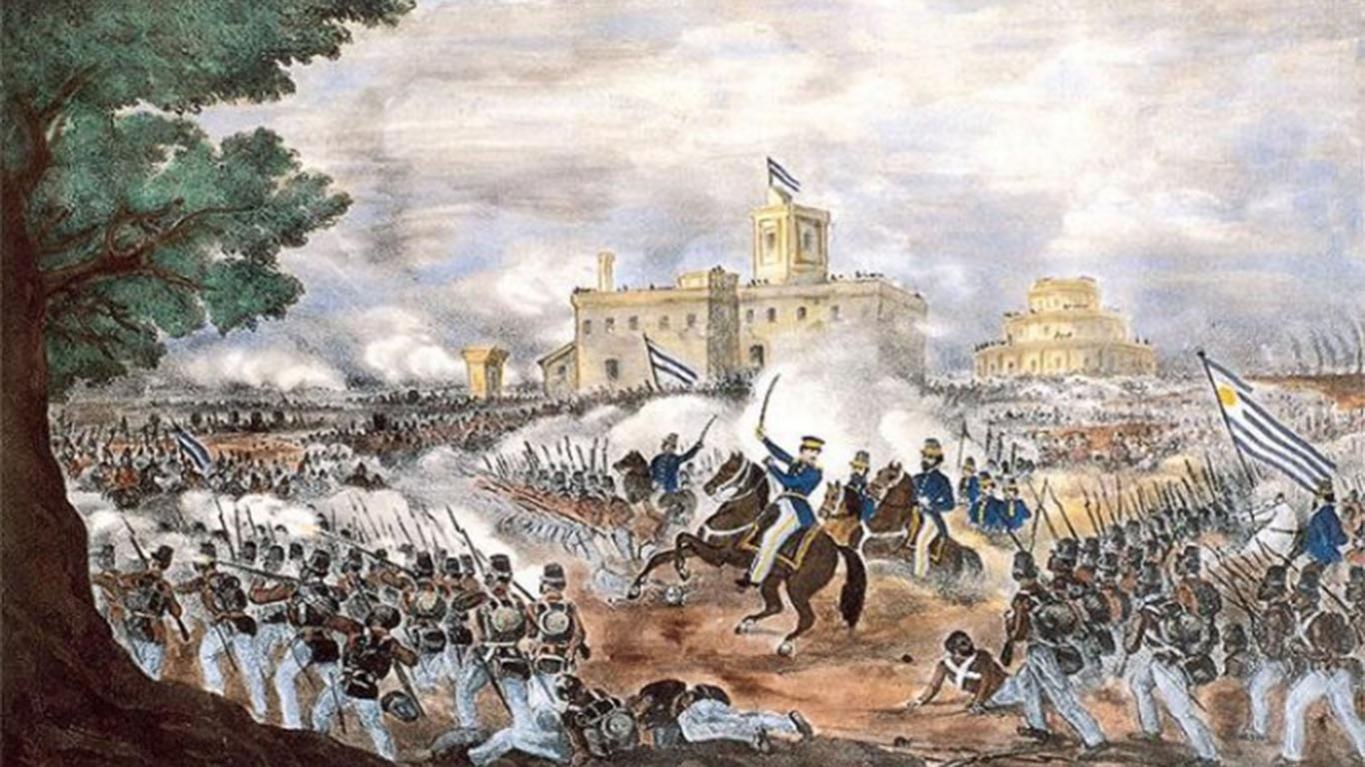Pan American War (1846-1852): Central America
PAN AMERICAN WAR (1846-1852):
Central America:
Yucatán:
Mexico was a nation at odds with itself. The Federalists argued for the balance of power among the three branches of state, whereas the Centralists centered all authority on President of the Republic. Federalists ruled in Mexico from the birth of the Republic until 1835, and this corresponded with calm, peaceful relations between Mexico and the Yucatán. In 1835 however, the Centralists took power and appointed the governor of Yucatán. As the Yucatán lost more and more of its autonomy, its people began considering the possibility of their own independence like Texas had.
The federal army of Yucatán, commanded by Captain Santiago Imán, took the city of Valladolid and on February 12, 1840 issued a report, which stated that federalism should be restored as a form of government to combat poverty in the country. The act required the reestablishment of the Mexican Constitution of 1824. Six days later, in the presence of troops of the garrison of Mérida (the Yucatán capital city) under the command of Anastasio Torrens, and many supporters, Captain Santiago Imán proclaimed the independence of the Yucatecan territory. On June 6, 1840, the city of Campeche surrendered to the Yucatecan Federalists after a military siege. The central government of Mexico then declared war on the Yucatán.

Map of Mexico in 1847
For years, the Yucatán had operated as an independent nation but had hoped to rejoin Mexico in 1846 when the Mexican government returned to a federalist constitution. However, not all were united in the Yucatán. War with the US had recently come to Mexico, and many did not have the appetite for war. The situation was about to get worse.
In 1847, the Maya of the Yucatán rose up in revolt in what would become known as the 'Caste War'. It was such a brutal conflict that it overwhelmed the Yucatecan forces, resulting in the Yucatecan delegation in Washington making a formal offer for the annexation of Yucatán to the United States. This suggestion appealed to some of the radical expansionists and the Young America movement. President James Knox Polk was pleased with the idea and the "Yucatán Bill" passed the U.S. House of Representatives, but was discarded by the Senate.

Oil painting of the Caste War, circa 1850
Though the Yucatán had nominally been a US ally as they sought independence from centralist Mexico and a favourable border settlement with Britain with regards to British Honduras, the return of federalism to Mexico and the ongoing Caste War left them desperate and without options. Seeking a return to Mexico, the internal squabbles of the area were set aside in order to address the larger problem.
With the federalists back in power, and the USA looking like it might lose the war, the Yucatecans opted to rejoin Mexico as a state and seek their assistance in putting down the Maya revolt. Mexico was only too happy to help when they could, and the rebellion of the indigenous Maya was finally put down August 17, 1848. Shortly thereafter, Yucatán rejoined Mexico.
Guatemala:
Guatemala's involvement in the war was actually a rather complicated affair. The British had settlements surrounding the Belize River, but it was a relative backwater even by Imperial standards. Though the Dutch were attempting to expand their influence in Central America, the British still reigned supreme in the influence department. Britain in fact had been the main political and business partner to Guatemala's first president, Rafael Carrera.
Carrera had been intrigued by the American call to action, but had assumed that if he sent unofficial militias, he might cut a better deal with the British and be given an excuse to increase his hold on power. However, there was a complication. In 1848, Guatemala's liberals managed to drive him from office after several months of political and social chaos. Some criollos even took the opportunity to declare the independence of the Los Altos region from Guatemala.

President Rafael Carrera of Guatemala
It was into this chaos that Britain found itself thrust into when raids started happening from the interior in 1847. The British were unsure if the raids were the work of Carrera, or a product of the chaos currently gripping Guatemala. Carrera did have strong native Maya support, but he wasn't exactly in power at this exact moment. Nevertheless, it left the British somewhat wary.
Britain originally approached the new government of Guatemala about the issue, but found themselves waiting an extremely long time for a meaningful reply. To help stall any advance, reinforcements were called up from Jamaica to defend Belize Town, and African and Native troops were deployed to the western and southern jungles to harass the Guatemalans and their supply lines. Additionally, Britain sent a squadron to threaten the Guatemalan coast as a last-ditch measure to resolve the issue diplomatically.

The Presidential Palace, Guatemala City
Unfortunately, the situation in Guatemala (Carrera's exile, the independence of the Los Altos region, and unrest at governorship) have all but precluded a British hand in Guatemala. Taking their chances on Carrera, Britain aided him in his return to power in the hopes that he would wield his influence over the Maya responsibly and negotiate in good faith the British. British Honduras thus became a staging ground for Maya armies under Carrera's command to help him return to the presidency.
The British raided and blockaded the Pacific coast of Guatemala in coordination with Carrera's movements, but largely let him and his forces take the lead. The British were also waiting for Mexican troops to redirect in the wake of the US armistice in 1849 in order to better defend their position and eliminate the Maya threat from the Caste War in the Yucatan. In early 1851, Carrera has returned to Guatemala as president and signs a treaty with the British delineating the border between British Honduras and Guatemala, while inherently recognizing British sovereignty over the area. The confusing Central American theatre of the Pan American War has come to a close.
Central America:
Yucatán:
Mexico was a nation at odds with itself. The Federalists argued for the balance of power among the three branches of state, whereas the Centralists centered all authority on President of the Republic. Federalists ruled in Mexico from the birth of the Republic until 1835, and this corresponded with calm, peaceful relations between Mexico and the Yucatán. In 1835 however, the Centralists took power and appointed the governor of Yucatán. As the Yucatán lost more and more of its autonomy, its people began considering the possibility of their own independence like Texas had.
The federal army of Yucatán, commanded by Captain Santiago Imán, took the city of Valladolid and on February 12, 1840 issued a report, which stated that federalism should be restored as a form of government to combat poverty in the country. The act required the reestablishment of the Mexican Constitution of 1824. Six days later, in the presence of troops of the garrison of Mérida (the Yucatán capital city) under the command of Anastasio Torrens, and many supporters, Captain Santiago Imán proclaimed the independence of the Yucatecan territory. On June 6, 1840, the city of Campeche surrendered to the Yucatecan Federalists after a military siege. The central government of Mexico then declared war on the Yucatán.

Map of Mexico in 1847
For years, the Yucatán had operated as an independent nation but had hoped to rejoin Mexico in 1846 when the Mexican government returned to a federalist constitution. However, not all were united in the Yucatán. War with the US had recently come to Mexico, and many did not have the appetite for war. The situation was about to get worse.
In 1847, the Maya of the Yucatán rose up in revolt in what would become known as the 'Caste War'. It was such a brutal conflict that it overwhelmed the Yucatecan forces, resulting in the Yucatecan delegation in Washington making a formal offer for the annexation of Yucatán to the United States. This suggestion appealed to some of the radical expansionists and the Young America movement. President James Knox Polk was pleased with the idea and the "Yucatán Bill" passed the U.S. House of Representatives, but was discarded by the Senate.

Oil painting of the Caste War, circa 1850
Though the Yucatán had nominally been a US ally as they sought independence from centralist Mexico and a favourable border settlement with Britain with regards to British Honduras, the return of federalism to Mexico and the ongoing Caste War left them desperate and without options. Seeking a return to Mexico, the internal squabbles of the area were set aside in order to address the larger problem.
With the federalists back in power, and the USA looking like it might lose the war, the Yucatecans opted to rejoin Mexico as a state and seek their assistance in putting down the Maya revolt. Mexico was only too happy to help when they could, and the rebellion of the indigenous Maya was finally put down August 17, 1848. Shortly thereafter, Yucatán rejoined Mexico.
Guatemala:
Guatemala's involvement in the war was actually a rather complicated affair. The British had settlements surrounding the Belize River, but it was a relative backwater even by Imperial standards. Though the Dutch were attempting to expand their influence in Central America, the British still reigned supreme in the influence department. Britain in fact had been the main political and business partner to Guatemala's first president, Rafael Carrera.
Carrera had been intrigued by the American call to action, but had assumed that if he sent unofficial militias, he might cut a better deal with the British and be given an excuse to increase his hold on power. However, there was a complication. In 1848, Guatemala's liberals managed to drive him from office after several months of political and social chaos. Some criollos even took the opportunity to declare the independence of the Los Altos region from Guatemala.

President Rafael Carrera of Guatemala
It was into this chaos that Britain found itself thrust into when raids started happening from the interior in 1847. The British were unsure if the raids were the work of Carrera, or a product of the chaos currently gripping Guatemala. Carrera did have strong native Maya support, but he wasn't exactly in power at this exact moment. Nevertheless, it left the British somewhat wary.
Britain originally approached the new government of Guatemala about the issue, but found themselves waiting an extremely long time for a meaningful reply. To help stall any advance, reinforcements were called up from Jamaica to defend Belize Town, and African and Native troops were deployed to the western and southern jungles to harass the Guatemalans and their supply lines. Additionally, Britain sent a squadron to threaten the Guatemalan coast as a last-ditch measure to resolve the issue diplomatically.

The Presidential Palace, Guatemala City
Unfortunately, the situation in Guatemala (Carrera's exile, the independence of the Los Altos region, and unrest at governorship) have all but precluded a British hand in Guatemala. Taking their chances on Carrera, Britain aided him in his return to power in the hopes that he would wield his influence over the Maya responsibly and negotiate in good faith the British. British Honduras thus became a staging ground for Maya armies under Carrera's command to help him return to the presidency.
The British raided and blockaded the Pacific coast of Guatemala in coordination with Carrera's movements, but largely let him and his forces take the lead. The British were also waiting for Mexican troops to redirect in the wake of the US armistice in 1849 in order to better defend their position and eliminate the Maya threat from the Caste War in the Yucatan. In early 1851, Carrera has returned to Guatemala as president and signs a treaty with the British delineating the border between British Honduras and Guatemala, while inherently recognizing British sovereignty over the area. The confusing Central American theatre of the Pan American War has come to a close.










